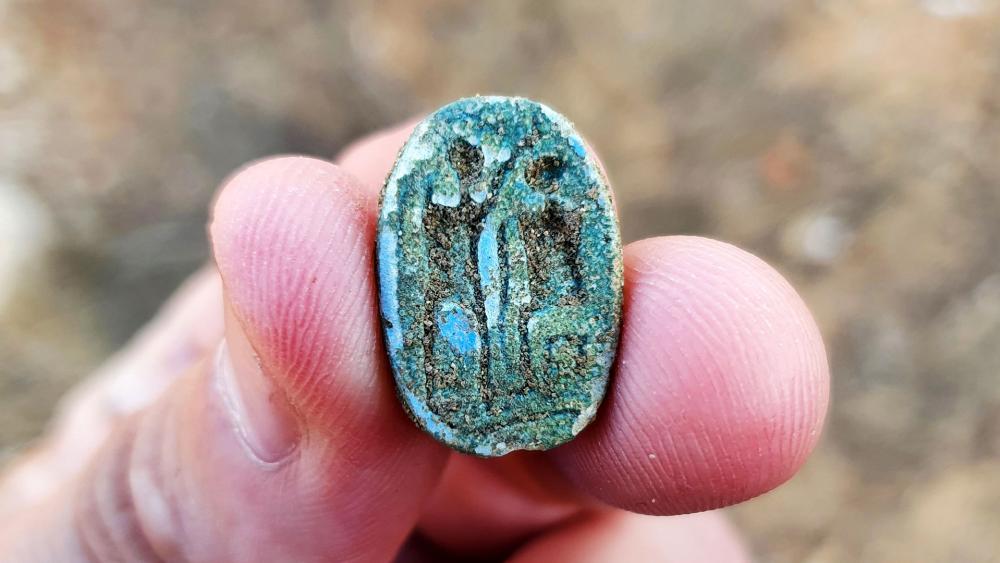JERUSALEM, Israel – Israeli middle school students recently on an archaeological tour at Azor near Tel Aviv were surprised, along with their guide, to find a 3,000-year-old Canaanite scarab or ancient seal, dating from the Late Bronze Age, near or just after the time that Moses was leading the Israelites out of Egypt.
“We were wandering around, when I saw something that looked like a small toy on the ground,” recalled the students’ guide, Gilad Stern of the Israel Antiquity Educational Center. “An inner voice said to me: ‘Pick it up and turn it over.’ I was astonished: it was a scarab with a clearly incised scene, the dream of every amateur archaeologist. The pupils were really excited!”
The scarab was created to bear the likeness of a common dung beetle. The Egyptians, who ruled Canaan in the Late Bronze Age, had a reverence for the beetle because the beetle would secure its offspring in a ball of dung twice as big as the beetle itself. That spoke to them as the essence of creation and regeneration, a kind of model of God the Creator.
Dr. Amir Golani is a Bronze Age expert at the Israel Antiquities Authority (IAA). “The scarab was used as a seal and was a symbol of power and status. It may have been placed on a necklace or a ring,” he explained. “It may have dropped from the hands of an important figure of authority who passed through the area, or it may have been deliberately buried in the ground along with other objects, and after thousands of years it came to the surface.”
The flat part of the scarab contains a figure, standing, and the arms of the figure are raised above a person who is seated. The standing figure has a stretched or elongated head, which scholars believe could depict an Egyptian Pharaoh standing over a Canaanite.
“This scene basically reflects the geopolitical reality that prevailed in the land of Canaan during the Late Bronze Age (1500-1000 BCE), when the local Canaanite rulers lived (and sometimes rebelled) under Egyptian political and cultural hegemony,” Dr. Golani observed. “Therefore, it is very possible that this seal is indeed from the Late Bronze Age when the local Canaanites were ruled by the Egyptian Empire.”

Israeli Antiquities Director Eli Escusido believes it’s significant that the middle school students saw such a discovery on their tour. He said it is “symbolic, in that the pupils were gaining an archaeological knowledge, and at the same time contributing to our archaeological heritage. This cooperation is truly moving, as we are working towards connecting communities with their cultural heritage.”
***Please sign up for CBN Newsletters and download the CBN News app to ensure you keep receiving the latest news from a distinctly Christian perspective.***
Did you know?
God is everywhere—even in the news. That’s why we view every news story through the lens of faith. We are committed to delivering quality independent Christian journalism you can trust. But it takes a lot of hard work, time, and money to do what we do. Help us continue to be a voice for truth in the media by supporting CBN News for as little as $1.










 Subscribe
Subscribe Follow
Follow CBN.com
CBN.com

 Support CBN News
Support CBN News







